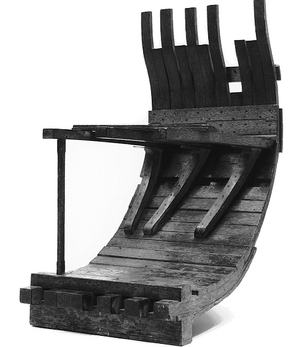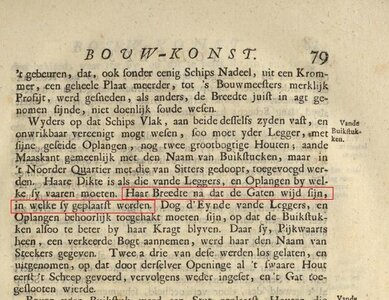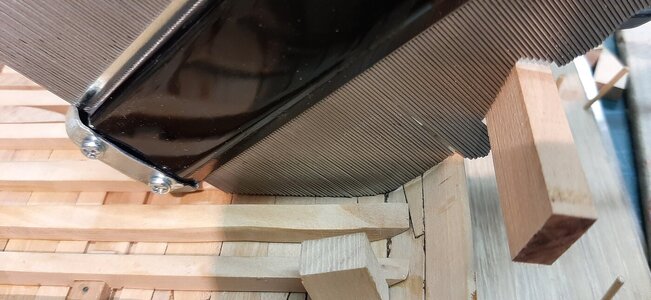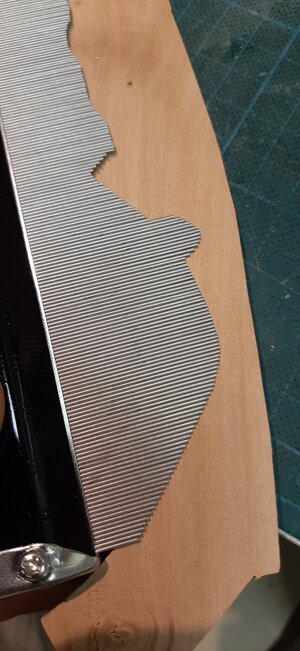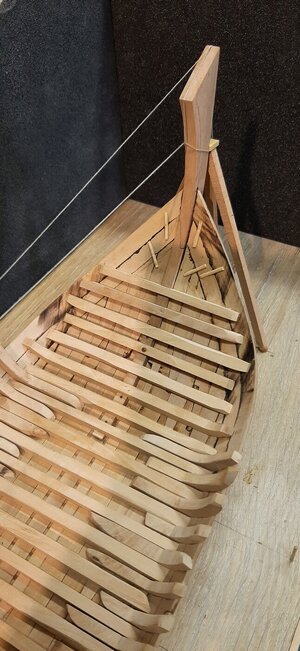- Joined
- Aug 8, 2019
- Messages
- 5,521
- Points
- 738

In “Oostvoornse Meer”(Lake) lies the 17th century wreck (OVM12) of a large seagoing Dutchman. And there you can clearly see that the frames lie against each other. The Witte Zwaan is a small ship and there I do not think it is important that the parts lie against each other, but the bigger the ship gets the more important the stiffness is. I think it has to do with that. It is known that the keel was concave or convex according to the cargo. And especially the frames around the keel have to fit together to provide extra strength.
The expansion of the wood when it was launched was actually desirable, partly due to the fact that when a wooden ship was first launched it was as leaky as a basket. It was therefore important to operate the pumps in the early days until the ship was watertight due to the expansion of the wood.
Part of the wreckage OVM12:


When you look to the drawings of Blom and Dik of the seven Provinciën, you see that those timbers also placed to each other at the floor. Why did these constructors did this? Are they wrong or is it normal when you build a big seagoing vessel? When you look to a longboat, you see the frames much more separated.
Maybe the specialist here like @Ab Hoving can tell us more about this subject.
The expansion of the wood when it was launched was actually desirable, partly due to the fact that when a wooden ship was first launched it was as leaky as a basket. It was therefore important to operate the pumps in the early days until the ship was watertight due to the expansion of the wood.
Part of the wreckage OVM12:


When you look to the drawings of Blom and Dik of the seven Provinciën, you see that those timbers also placed to each other at the floor. Why did these constructors did this? Are they wrong or is it normal when you build a big seagoing vessel? When you look to a longboat, you see the frames much more separated.
Maybe the specialist here like @Ab Hoving can tell us more about this subject.







